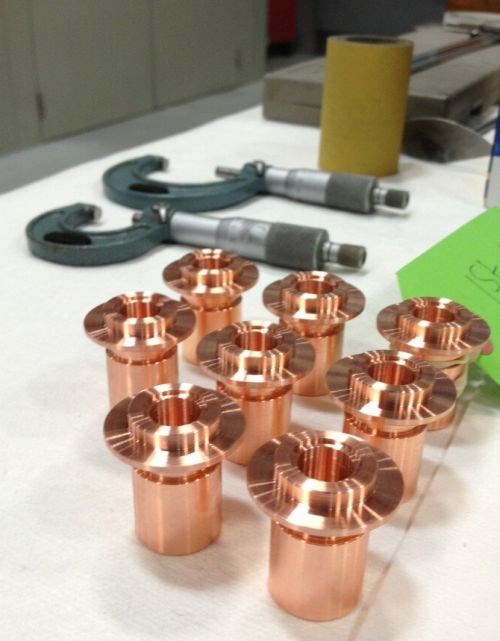A Machinist’s Tweets
Here is a twitter feed MMS Editor Pete Zelinski enjoys. A machinist occasionally tweets about what his work is like. It's a fun glimpse into the job.
Share





ECi Software Solutions, Inc.
Featured Content
View More
Takumi USA
Featured Content
View More
Autodesk, Inc.
Featured Content
View More




Hwacheon Machinery America, Inc.
Featured Content
View More
Richard Mercier has been a machinist of more than 25 years, and his father was a machinist, too. Currently working for Soleras Advanced Coatings (a maker of equipment for physical vapor deposition), he occasionally pauses to tweet about what the work of a machinist is like. The result is one of the Twitter feeds I enjoy—a steady stream of glimpses into the craft of someone who values the attention and skill he gets to apply every day. Find him at @mistermachinist. Here is a selection of his tweets:
Well, had a good day machining today. Managed to save a part that was sawcut right to length. Had to machine both ends square. Just made it.
Machining a 5-inch dia. pipe 1/8 inch wall @6ft long, getting lots of vibration, having to machine it in 18-inch sections with steady rest.
We normally use a lot of aluminum jaws, which are nice because I often re-cut my jaws to make sure they are true and the right size.
I like to keep a log of the work that I'm doing each day. It's nice to be able to look back and see how you did it the last time.
Today I modified my magnetic base with a 600-mm-long rod to mount my indicator on for a special job on one of our bigger machines.
I always put special notes in my programs to let others know why I did things that way. I had to machine a dimension oversize for clearance.
Always read your blueprint carefully. I had a program where a groove was omitted and it was because the dimension lines crossed on the print.
I had to drill a 1-inch hole in a pc of stainless steel. I actually step drilled 3 drills to work up to size. It cut easier and with less heat.
Being a good machinist takes a lot of hard work and patience. Sometimes you can only go so fast, and knowing that means a lot.
Related Content
-
DN Solutions Responds to Labor Shortages, Reshoring, the Automotive Industry and More
At its first in-person DIMF since 2019, DN Solutions showcased a range of new technologies, from automation to machine tools to software. President WJ Kim explains how these products are responses to changes within the company and the manufacturing industry as a whole.
-
Solve Worker Shortages With ACE Workforce Development
The America’s Cutting Edge (ACE) program is addressing the current shortage in trained and available workers by offering no-cost online and in-person training opportunities in CNC machining and metrology.
-
Same Headcount, Double the Sales: Successful Job Shop Automation
Doubling sales requires more than just robots. Pro Products’ staff works in tandem with robots, performing inspection and other value-added activities.















.png;maxWidth=150)



















